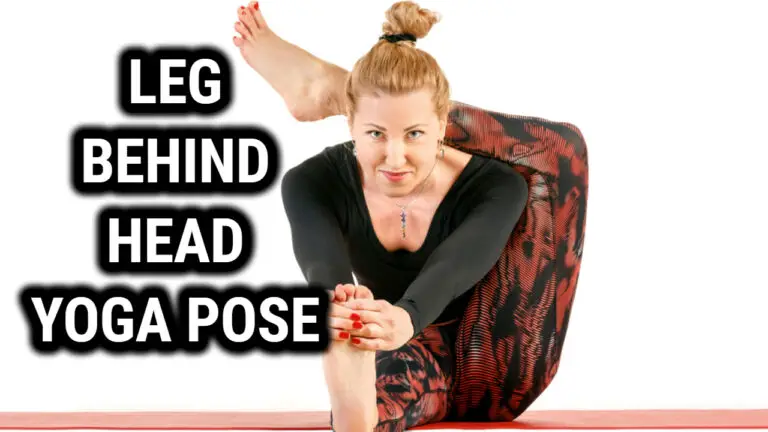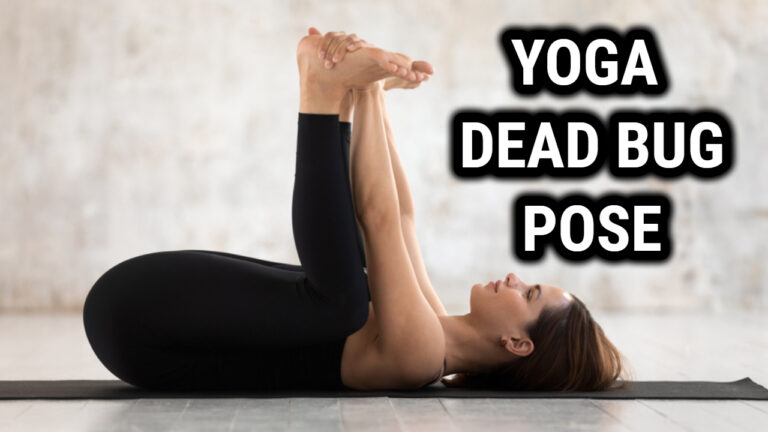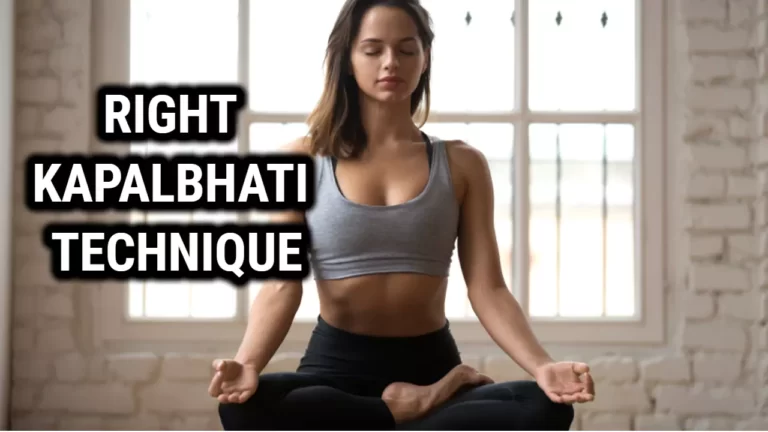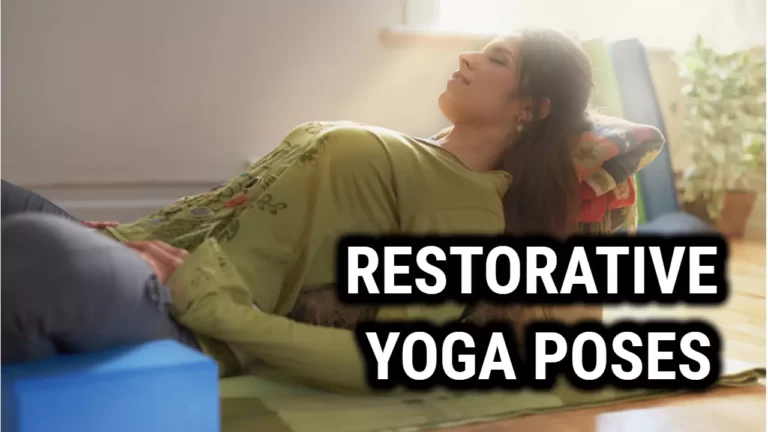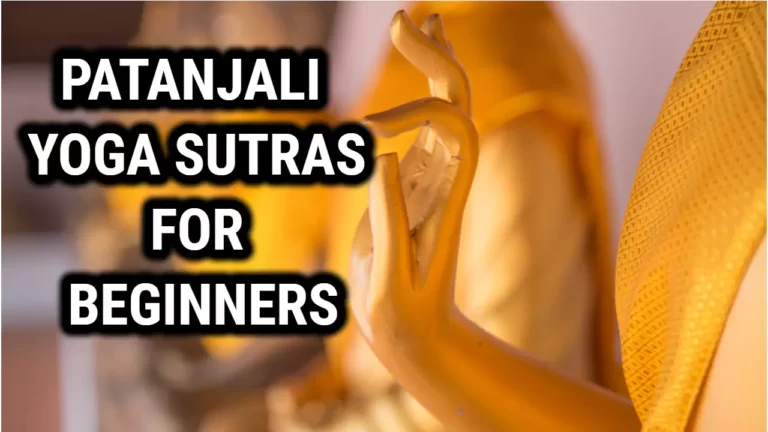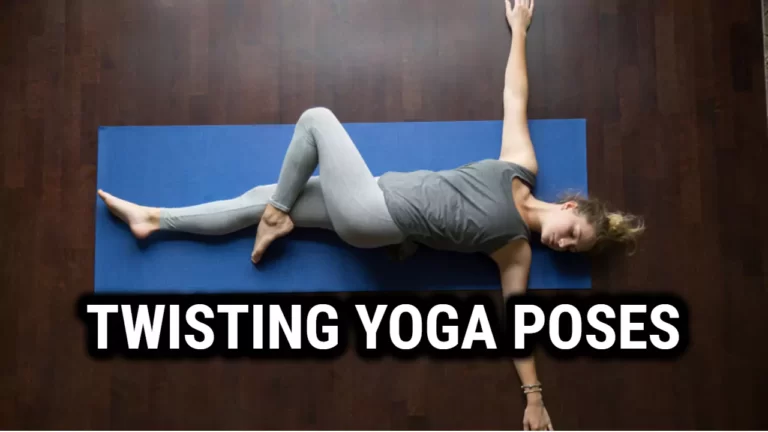What is Forrest Yoga: Explore the Healing Power of Forrest Yoga
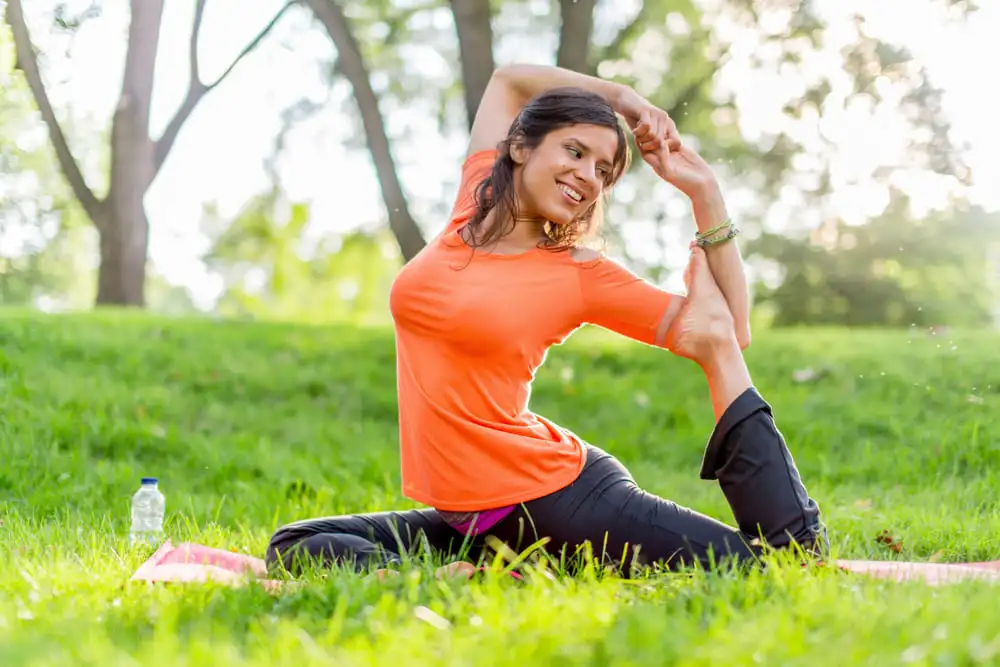
What Is Forrest Yoga
Have you ever heard of Forrest Yoga? It’s a powerful and transformational yoga practice that’s been gaining popularity in recent years. This unique form of yoga is designed to help you find strength and stability in your body and mind, enabling you to move through life with ease. If you’re looking for an innovative way to take your yoga practice to the next level, Forrest Yoga may be just what you need.
In this article, we’ll explore what Forrest Yoga is all about and how it differs from more traditional forms of yoga. We’ll also discuss the various benefits of practicing Forrest Yoga and provide some tips on how to get started. So if you’ve been curious about this exciting new style of yoga, keep reading!
Forrest Yoga is a powerful tool for helping people find balance in their lives. It can help reduce stress, increase mindfulness, and improve physical strength and flexibility. By learning the principles and techniques of this dynamic practice, you can open yourself up to greater health and wellbeing. Ready to learn more? Let’s dive into the world of Forrest Yoga!
Overview Of Forrest Yoga

Forrest Yoga is a powerful yet accessible practice created by Ana Forrest. It is designed to teach individuals how to heal physical and emotional pain through mindful breathwork and intentional movements. This type of yoga brings awareness to the body and helps practitioners connect more deeply with their inner self. The postures are designed to be simple yet empowering, allowing for deep healing and transformation.
By understanding how energy moves through the body, Forrest Yoga empowers individuals to tap into their inner strength while connecting with their higher selves. Through this practice, practitioners learn how to access the power of healing that lies within themselves, creating a sense of self-awareness and connection with life’s greater purpose.
With an emphasis on breathing and feeling into each pose, Forrest Yoga gives individuals an opportunity to develop a deeper relationship with themselves and the world around them.
What Makes Forrest Yoga Different?
It stands out for its focus on connecting to inner guidance and building strength through breath work, asanas, and hands-on adjustments. These elements combine to create an intense workout that both challenges and nurtures the practitioner.
In a Forrest Yoga class, participants are encouraged to explore their full range of movement in each pose, rather than striving for perfect alignment. They are also taught to use the breath to dive deeper into poses and stay present with the sensations they experience during practice.
Furthermore, teachers offer hands-on adjustments to help students find greater ease and comfort within poses and ensure that they don’t become stuck in them.
These unique elements of Forrest Yoga make it an effective practice for improving physical strength as well as emotional well-being. By connecting with one’s body on a deeper level and pushing one’s limits through focused breathing, practitioners can develop an increased awareness of their inner guidance system that will serve them far beyond the mat.
Benefits Of Practicing Forrest Yoga
- Improved posture and spinal alignment: Forrest Yoga helps to strengthen and lengthen the muscles of the spine, which in turn helps to improve posture and realign the spine.
- Increased strength and flexibility: Forrest Yoga uses a combination of poses and exercises that help to strengthen and stretch the body, leading to increased strength and flexibility.
- Stress relief and relaxation: The combination of poses and breathing exercises used in Forrest Yoga helps to relax the body and provide a sense of peace and well-being.
- Improved balance and coordination: Forrest Yoga helps to improve balance and coordination by teaching proper alignment and body awareness.
- Heightened body awareness: By learning the poses and breathing techniques of Forrest Yoga, you will become more aware of your body and how it moves.
- Improved concentration and focus: Regular practice of Forrest Yoga helps to develop mental focus, which can improve concentration and focus.
- Improved digestion: The poses and breathing exercises of Forrest Yoga help to stimulate the digestive system, leading to improved digestion.
Types Of Classes Available

When it comes to Forrest Yoga practice, there are a variety of classes available. From beginner classes to teacher training, students can find the right class for any level of experience or interest.
Beginner classes are designed to help new practitioners learn the basics of Forrest Yoga and develop an understanding of the four pillars that form its foundation.
Intermediate and advanced classes offer more challenging postures and sequences, as well as opportunities for personal growth.
For those interested in becoming a yoga teacher, there are teacher training courses available that provide the knowledge and skills needed to lead Forrest Yoga classes.No matter what level of experience or interest, there is a Forrest Yoga class to fit every individual’s needs.
These classes also provide a safe and supportive atmosphere where students can explore their own physical and emotional strength while developing self-awareness.
Four Pillars Of Forrest Yoga

Forrest Yoga is like a yoga mat that has been woven together from many different types of yoga. It is made up of four main pillars that provide the foundation for the poses I’ve created. These pillars are Breath, Strength, Integrity and Spirit.
The first pillar of Forrest Yoga is Breath. This type of breath work focuses on connecting with the body and deepening one’s awareness of the physical and emotional states within it. This helps to create a sense of connection between the mind and body which can be used to access deeper levels of healing.
The second pillar is Strength, which emphasizes cultivating physical strength through mindful movements while paying attention to alignment, balance and form.
The third pillar is Integrity encourages practitioners to stay connected to their bodies by listening deeply and staying present in each posture they practice.
Finally, Spirit encourages practitioners to explore their inner spiritual practices as they move through their postures.
These four pillars combined create a strong foundation for practitioners to build upon as they journey into their own Forrest Yoga practice.
How To Prepare For A Forrest Yoga Class
Once you understand the four pillars of Forrest Yoga, it’s time to get ready for a class. It’s important to remember that Forrest Yoga is unique, so don’t expect your traditional yoga flow. Instead, be prepared to experience poses that Ana Forrest has created over the years.
To best prepare for a Forrest Yoga class, talk with your teacher about any physical or emotional issues you may have. Your teacher will be able to provide modifications and adjustments for any poses that are challenging for you. Additionally, make sure to bring a hand towel and water bottle to class since the practice can become quite rigorous at times.
Ana Forrest is passionate about guiding her students through their growth and transformation process in order for them to become more connected with their bodies and spirits. This means that each pose in a Forrest Yoga class is meant to be explored deeply from an internal perspective as opposed to an external perspective.
Therefore, arrive open minded and ready to listen carefully as your teacher guides you through each pose. You will find that this approach helps you move more deeply into the practice which can help unlock new levels of strength, flexibility, and awareness within yourself.
Basic Moves And Postures In Forrest Yoga

Forrest yoga is a style of yoga created by Ana Forrest. It is a vigorous, therapeutic style that focuses on breath, strength and alignment.
- Mountain Pose: Start standing with your feet together, your arms by your sides, and your palms facing forward. Draw your shoulders down and back. Lift your chest and lengthen your spine. Press your feet firmly into the ground.
- Standing Forward Bend: Begin in Mountain Pose. Bend forward from your hips, keeping your back straight and your legs active. Place your hands on the floor, or on your shins if you can’t reach the floor.
- Plank Pose: Start on your hands and knees. Step your feet back, keeping your arms straight and your legs active. Pull your navel up and in.
- Downward-Facing Dog: Begin in Plank Pose. Lift your hips up and back, keeping your legs active and your arms straight. Relax your head and neck.
- Cobra Pose: Lie on your stomach with your legs straight and your arms by your sides. Press your feet and hands into the ground. Lift your chest off the ground, keeping your hips and legs on the floor.
- Warrior I: Begin standing. Step one foot back, keeping your feet hip-width apart. Bend your front knee, keeping your back leg straight. Reach your arms up, keeping your shoulders down and away from your ears.
- Warrior II: Begin in Warrior I. Lower your arms to shoulder height, parallel to the ground. Turn your back foot out 90 degrees. Look over your front hand.
- Triangle Pose: Begin in Warrior II. Turn your back foot in slightly, and reach your front arm out to the side. Place your other hand on your ankle or on the floor. Look up at your top hand.
- Tree Pose: Begin standing. Lift your left foot and place it on your inner thigh or calf. Bring your palms together in front of your chest.
Also Read: Best Yoga Mats For Travel – Take Your Yoga Practice To The Next Level
Modifications And Props In Forrest Yoga Classes
Modifications and props can be used to enhance a Forrest Yoga practice. Many poses in the sequence can be modified to make them more accessible, or to deepen the experience.
Props such as blocks, straps, and blankets are available to add support and comfort while performing certain postures. Here are five ways props and modifications can improve a Forrest Yoga class:
- Blocks, straps, or blankets can provide extra support for those who need it.
- Modifying poses can help students build strength and stability safely.
- Props can create a more comfortable experience for people with injuries or physical limitations.
- Sequencing poses with props allows for longer holds and an increased focus on breathwork.
- Incorporating props into sequences encourages balance between effort and ease in the practice.
Using modifications and props in Forrest Yoga classes is an effective way to deepen your practice, increase awareness of breathwork, and create a safe space for everyone involved. It also provides an opportunity for practitioners to explore their own individual needs when building a sequence of poses in a class setting.
Frequently Asked Questions
How Often Should I Practice Forrest Yoga?
Practicing Forrest Yoga can be a great way to improve your overall wellbeing. How often you practice it depends on what you’re trying to get out of the practice. If you are looking to use Forrest Yoga as a form of stress-relief and relaxation, then one or two sessions a week may be enough. On the other hand, if you want to deepen your practice, then more frequent sessions could be beneficial.
The frequency of your practice will also depend on your own physical needs and preferences. Many people find that doing Forrest Yoga three or four times per week helps them to maintain their health and wellbeing. It is important to remember that everyone’s body is different, so make sure you listen to yours and adjust your practice accordingly.
Is Forrest Yoga Suitable For Beginners?
Forrest Yoga offers a unique approach for beginners, providing an inviting atmosphere where everyone can feel safe. The practice emphasizes on connecting with one’s body and listening to its messages. It is suitable for those who are brand new to yoga as it provides slower paced sequences that allow practitioners to understand their bodies more deeply while still receiving a good workout.
Are There Any Physical Restrictions For Forrest Yoga?
Are there any physical restrictions for Forrest Yoga? This is a common question for those who are considering starting this type of practice, and the answer is yes. It’s important to be mindful of any physical limitations that may prevent you from participating in Forrest Yoga, as the poses can be quite strenuous.
Here are some guidelines to consider when deciding if Forrest Yoga is right for you:
- Pre-existing Injuries or Conditions:
- If you have any pre-existing injuries or conditions, it’s best to consult with your doctor before starting a Forrest Yoga practice.
- Practice at your own pace and listen to your body so that you don’t overdo it and cause further injury.
- Don’t push yourself too hard—modify poses as needed and take breaks whenever necessary.
- Limited Mobility:
- Those with limited mobility should approach Forrest Yoga with caution.
- Poses may need to be modified or avoided altogether if they cause pain or discomfort.
- Start off slow and work your way up as your body becomes more accustomed to the practice.
- Preganancy:
- Pregnant women should always consult their doctors before beginning a new exercise program, especially one as intense as Forrest Yoga.
- Many poses should be avoided during pregnancy due to potential risks, so it’s important to talk with a healthcare professional before getting started.
When deciding whether or not to start a Forrest Yoga practice, it’s essential to take into consideration any physical limitations or pre-existing conditions that may prevent you from doing certain poses safely and effectively. Be sure to listen to your body and modify poses accordingly, so that you can get the most out of your practice without risking injury.
Is Forrest Yoga More Physically Challenging Than Other Types Of Yoga?
“Where there is a will, there is a way” – this is an apt adage that applies to the physical challenge of Forrest Yoga. Often touted as one of the most physically demanding forms of yoga, Forrest Yoga tests the strength and endurance of practitioners through its rigorous poses and sequences. But how does it compare to other types of yoga?
The answer isn’t straightforward; it depends on your individual ability, goals and preferences. Some yogis find that Forrest Yoga’s challenging poses provide them with an intense workout. Others may find that its slow-paced and meditative approach are more suitable for their body and mind. It all comes down to personal preference.
That being said, Forrest Yoga can certainly be considered more physically demanding than other types of yoga. It focuses heavily on core strengthening, which requires more energy and effort than other forms of exercise.
Related Read: Buti Yoga Benefits: Unleash Your Inner Power
Conclusion
It seems like everyone is practicing Forrest Yoga these days. After all, there are no physical restrictions, and with regular practice, you can expect to experience greater flexibility and strength. Plus, it provides a safe space for people to work through their fears and anxieties.
So if you’re looking for something new to add to your yoga practice, look no further than Forrest Yoga! You won’t regret it. And who knows – maybe you’ll even find yourself joining the growing population of Forrest Yogis out there!
